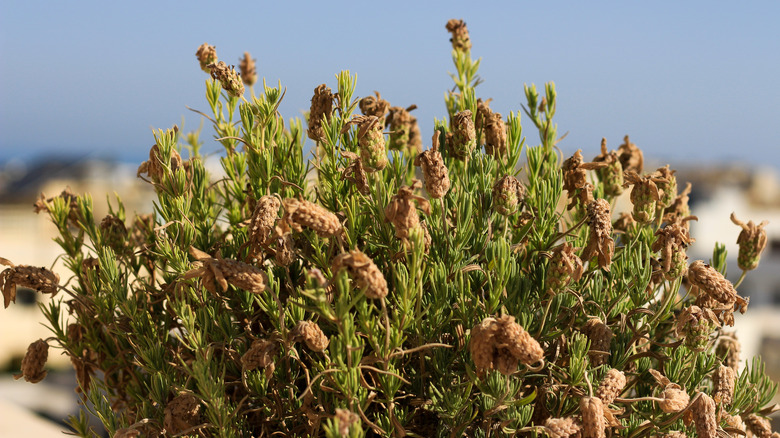Why Your Summer Watering Routine Is Killing Your Lavender Plants
Lavender is a gorgeous herb with a lovely scent, and it can be one of the best plants for your pollinator garden. But if your bushes are starting to die out this summer, you may need to reevaluate how you're watering these plants. When the weather starts to get really hot, you may be watering your lavender more often to try to help it through the extra sunlight and heat. While this is well-intentioned, these plants come from the Mediterranean, so they're accustomed to warmer climates and prefer lots of direct sunlight, making them fairly resistant to drought.
Overwatering your plant, whether it's potted, in a raised bed, or in the ground, is one of the biggest mistakes to avoid when growing lavender. Too much water often leads to root rot, but it could be the source of bacterial or fungal issues as well. Not only will you need to consider how often you're giving your lavender a drink, but also at what time of day, since the summer sun could affect water absorption. If your lavender is already suffering, you may be able to help bring some life back into it by allowing it to dry out.
Tips for your lavender plants' watering routine in the summer
The best method for watering lavender is to ensure the soil has dried out before giving your established plant a drink and to pour the water directly on the soil rather than the plant itself. If you've recently planted or transplanted your lavender bush, it will require a bit more water. More mature plants should be watered very deeply, but not often. If it's been regularly raining in your area in the summer, your lavender might not need much help at all. Only water them if there hasn't been any rain for about two weeks.
When your lavender is growing in a raised bed or a pot, it could need to be watered more often, depending on where it's situated. You'll want to check that the soil has begun to dry out deep in the pot, where the roots are, before watering. Additionally, it's crucial that the soil is well-draining, as this plant doesn't respond well to the roots constantly being wet. For soils with poor drainage, try mixing in some sawdust or peat moss.
When to water to avoid killing your lavender plants
The amount of water your plant is receiving is important, but the time of day you give your lavender a drink could impact its health as well. Susan Betz, an author with the International Herb Association, told Homes & Gardens when you should water your lavender bushes: "Morning is the best time to water, [and] be careful to avoid wetting leaves in the day's heat and before sundown. Water left on foliage after dark will encourage fungal disease," she said.
And though it's good to give your lavender water during a dry spell, doing so in the middle of the day when the sun is at its hottest could cause the water to evaporate before the plant can soak it up.
For plants that have already been waterlogged, you'll want to refrain from giving them any liquid until the soil has dried out again. With potted plants, moving them to a place that gets more sunlight can help the soil to dry faster. You may need to prune the roots of your plant if you transfer it and notice any rot.


